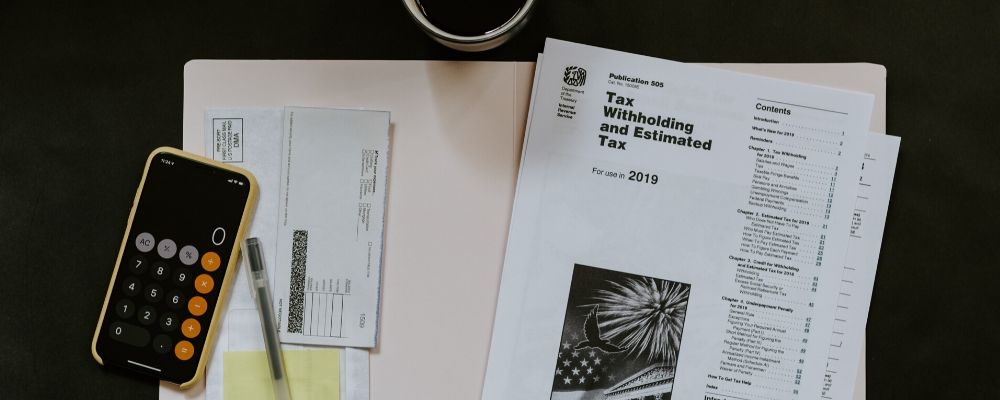US v Australian tax for individuals – how do you ‘translate’ a US tax return into an Australian tax return?
US v Australian Tax for Individuals
US citizens living in Australia are tax residents and hence assessable on their world-wide income in both countries. But what does this look like in practical terms?
How are Australian franking credits and super guarantee payments treated in a US tax return? And how are exempt interest and qualified dividends in the US treated in an Australian tax return?
These are just some of the questions we ask Seth Hertz of Expat US Tax in this episode ‘US v Australian tax for individuals’.
Here is what we learned but please listen in as Seth explains all this much better than we ever could.
To listen while you drive, walk or work, just access the episode through a free podcast app on your mobile phone.
Tax Year Is What It Is
The US uses the calendar year as tax year. Australia’s tax year goes from 1 July to 30 June. Highly inconvenient. But it is what it is.
Yes, in theory you could change the US tax year and adjust it to the Australian tax year. But that is so tedious and cumbersome, that you are better off to just work with the different tax years.
How To Split the Income Between Tax Years
Since you are dealing with two different tax years, the question is how do you do the cut-off between the two. You have three options:
1 – Transaction By Transaction
You basically ignore the US tax return when preparing the Australian one. Instead you go back to the original transactions and source documents.
2 – 50/50
You just cut the US income in half and use half in each tax return.
3 – Quo Terminus
You just assume that both countries have the same tax year. And recognise the US sourced income from the US tax return 1 to 1 in the Australian return, disregarding timing. This is also called quo terminus.
Quo Terminus
There is no legislative basis for the quo terminus approach – neither in the US nor in Australia. Quo terminus is a practical approach, not necessarily a legal approach.
If you have recurring income – interest is a great example – where the amounts are fairly static throughout the year, there is an argument that allocating each payment to the right periods is neither worth the effort nor does it result in a materially different outcome.
And you often don’t have the information available yet for an accurate allocation anyway.
The quo terminus approach is to ensure that returns can be lodged timely. It avoids having to go back and amend prior returns in order to get more accurate information with regards to both income and foreign income tax offsets.
If you go down to dollars and cents, quo terminus will of course be slightly inaccurate in comparison to an exact allocation. Does the ATO mind that inaccuracy? Not sure. Nobody seems to have asked them yet. If you asked the ATO off record they would probably say, “We are happy with that,” But they probably can’t say that on the record.
Foreign Tax Credits
In Australia you must pay the tax before you can claim the foreign income tax offset.
The US has two different ways of claiming foreign tax credits – paid method v accrual method.
The paid method refers to actual payments. It looks at taxes paid up to 31 December, without regard to which Australian year they relate to.
For the accrual method you take the last Australian year end and recognise that tax payable. So in the 2019 US return you refer to the tax payable in the 2018/19 Australian return, regardless of payment.
Franking Credits
The US doesn’t recognise franking credits – neither as assessable income nor as a tax offset.
So for a net dividend of $70 with a $30 franking credit, Australia recognises assessable income of $100 and a tax offset of $30. The US just recognises assessable income of $70 with no tax credit.
Super Guarantee Payments
This is a contentious issue. The generally accepted position is that super guarantee payments represent income and hence need to be included in assessable income in the US return. But there are some accounting and law firms out there that take different positions, but this position is not necessarily advantageous for the taxpayer.
SMSF
There is a possibility that the growth within an SMSF is assessable income in the US. But this is a huge topic, so make sure you ask the experts on this one.
Qualified Dividends
The US distinguishes between general and qualified dividends. General dividends are just that. Qualified dividends are dividends taxed at lower tax rates in the US since treated like a capital gain. Infrastructure projects are a possible example. Dividends from an Australian shareholding are also qualified by definition because the Australia and the US have a double tax agreement that fits into the definition.
Exempt Interest
Exempt interest usually comes from municipal bonds. Different municipalities in the US – state or local governments- issue bonds and try and raise capital for schools or local projects. The interest paid on those bonds is tax exempt in the US tax return, but not in the Australian tax return.
_____
So these are just some examples how US tax is different from Australian tax. Of course there is a lot more. Please listen to this episode as Seth covers all this in much more detail.
MORE
Tax Residency of Individuals & Companies
Disclaimer: Tax Talks does not provide financial or tax advice. All information on Tax Talks is of a general nature only and might no longer be up to date or correct. You should seek professional accredited tax and financial advice when considering whether the information is suitable to your or your client’s circumstances.
